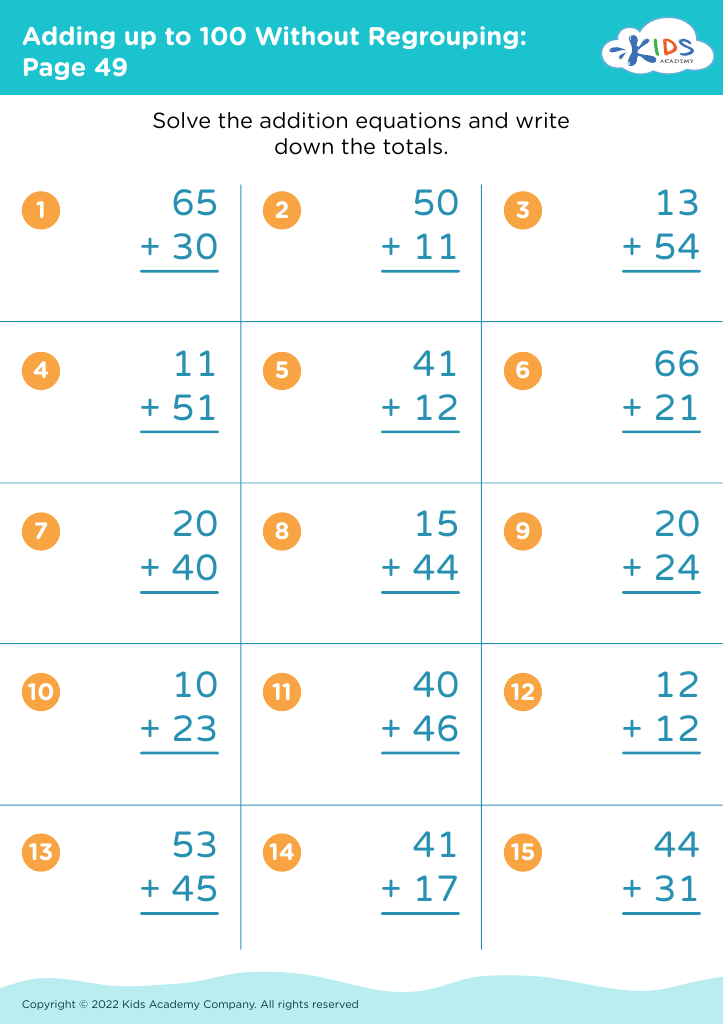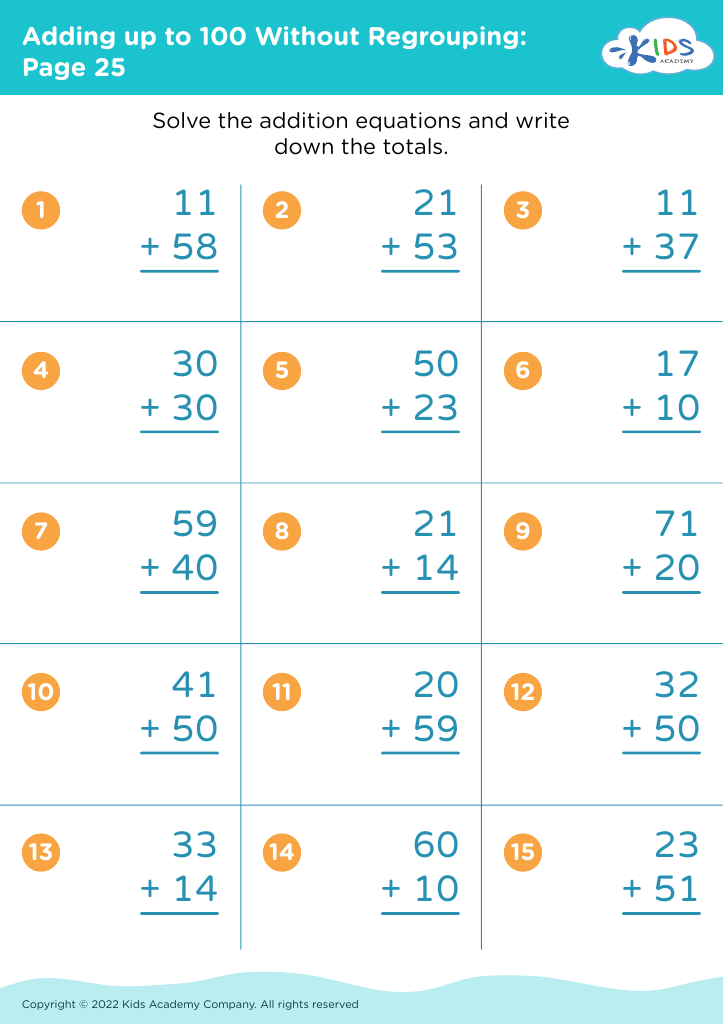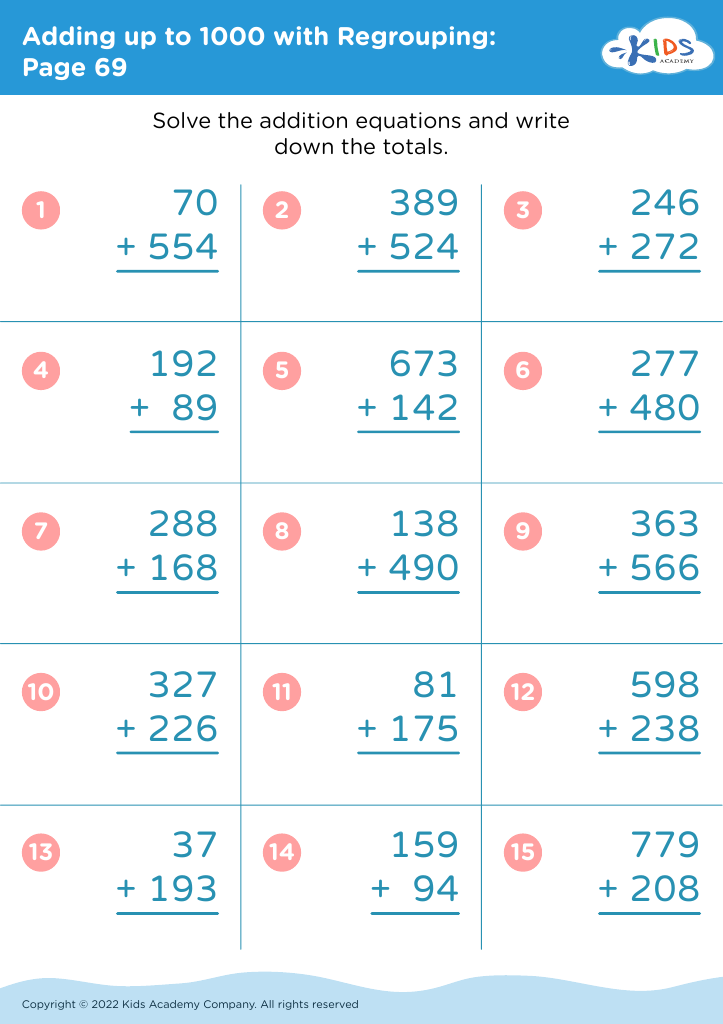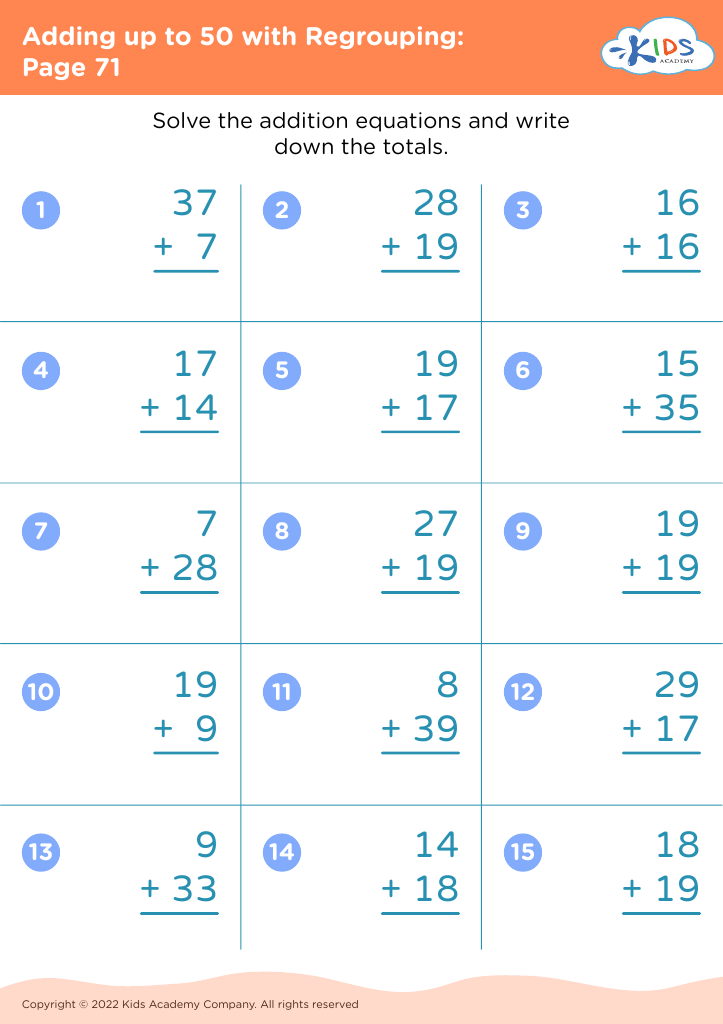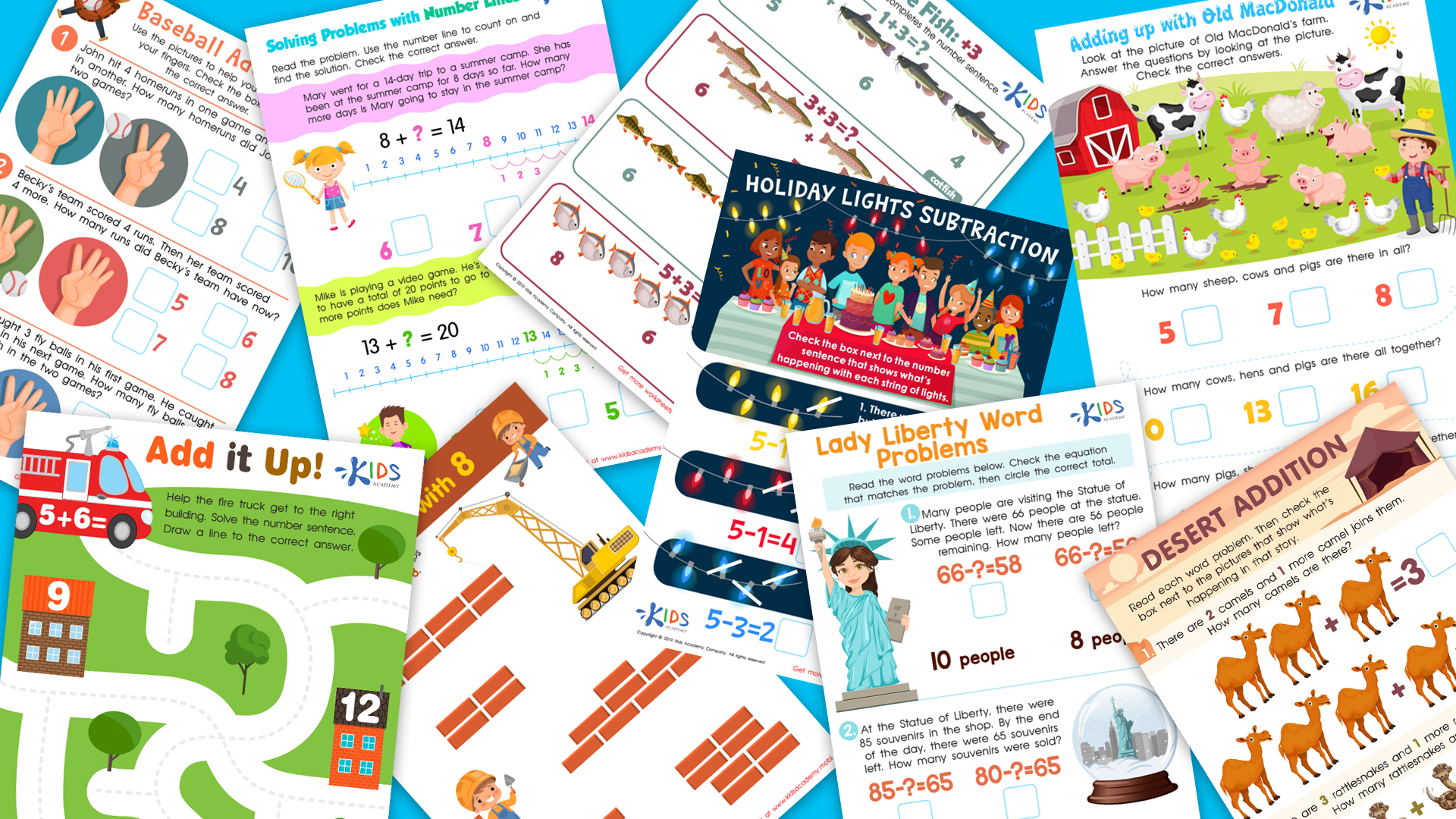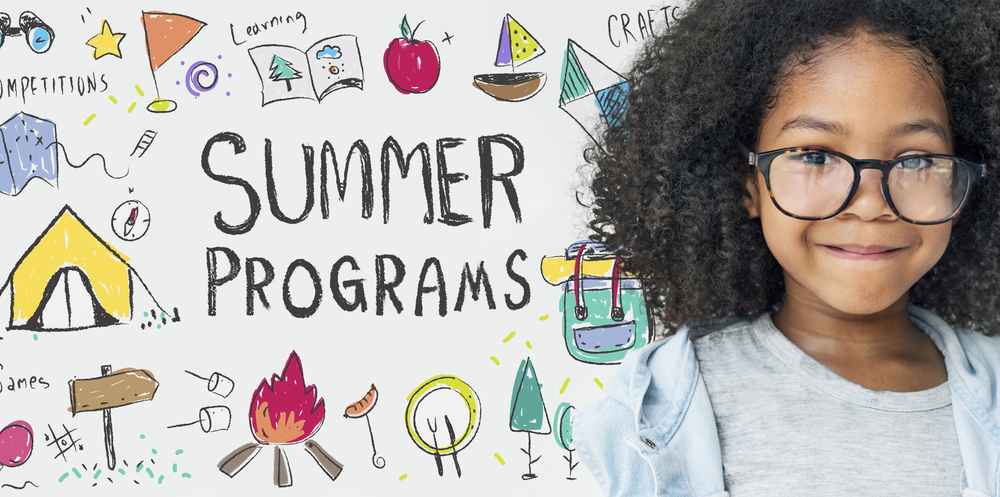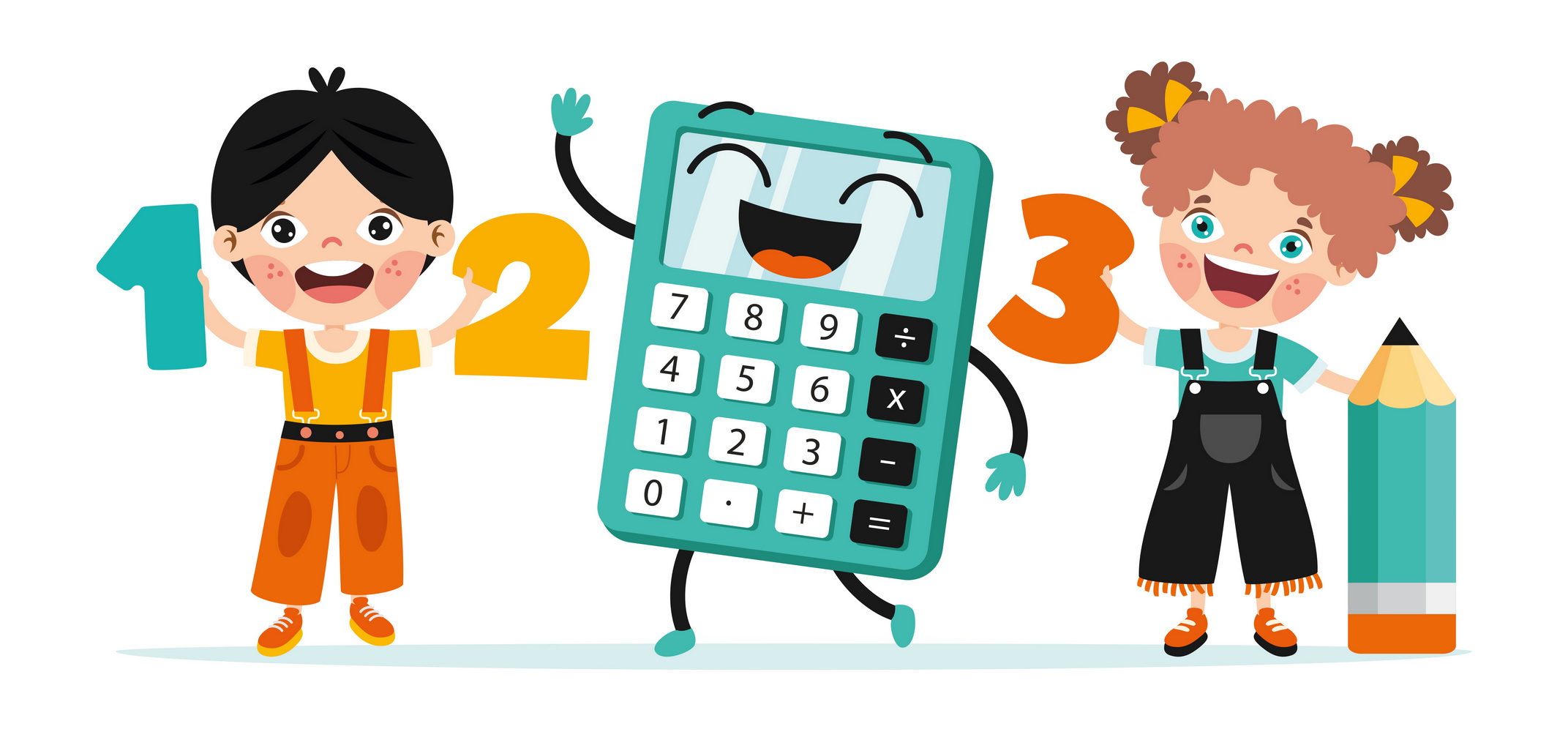Visual discrimination Addition & Subtraction Worksheets for 7-Year-Olds
4 filtered results
-
From - To
Enhance your 7-year-old's math skills with our engaging Visual Discrimination Addition & Subtraction Worksheets! Designed specifically for young learners, these worksheets focus on developing crucial visual discrimination abilities that aid in recognizing numbers and patterns essential for mastering addition and subtraction. By using interactive exercises and vivid illustrations, children will refine their observational skills while gaining confidence in their mathematical abilities. Parents and educators can access a variety of captivating worksheets that make learning fun and effective. Download now and watch your child's comprehension and precision in math come to life while cultivating their love for learning!
Visual discrimination is a critical skill for young learners, especially when it comes to mastering addition and subtraction concepts. For 7-year-olds, developing visual discrimination enhances their ability to recognize differences and similarities in numbers, shapes, and quantities, which lays the foundation for effective problem-solving.
When children can visually differentiate between numerical values, they become more proficient at identifying patterns, concepts, and relationships intrinsic to math. This skill also aids in reducing errors made during calculations and helps them understand number operations more intuitively. Typos can often occur during worksheets, and supporting visual discrimination can help students pick up on these errors quickly.
Furthermore, nurturing this ability sparks creativity, as children learn to visualize changes in quantity, which is central to understanding addition and subtraction. When parents and teachers prioritize visual discrimination in math, they promote confidence and independence in young learners. They become adept at visualizing mathematical problems, leading to improved academic performance and fostering a lifelong love for numbers.
This foundational element of math literacy is vital, as it equips students with the tools necessary for more complex learning as they progress in their education, directly influencing their future success.

